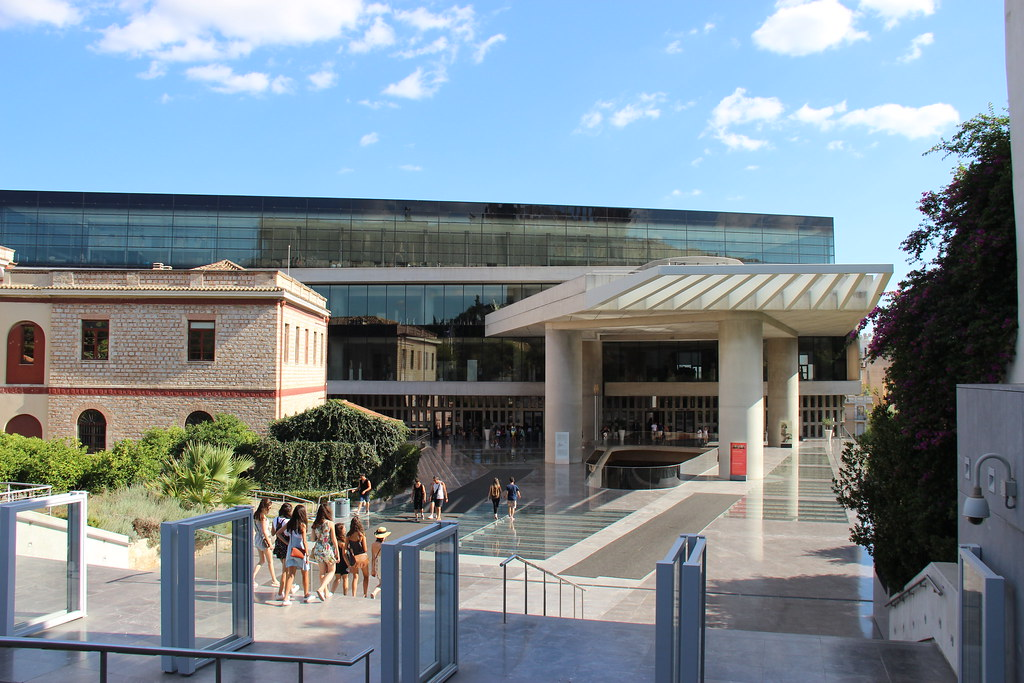Title of the work
Country of the First Edition
Country/countries of popularity
Original Language
First Edition Date
Available Onllne
theacropolismuseum.gr (accessed: August 6, 2020),
Aρχαϊκά Χρώματα (accessed: March 9, 2023).
Εκθεσιακές Δράσεις - Αρχαϊκά Χρώματα (accessed: March 9, 2023).
Genre
Colouring video games*
Target Audience
Children
Cover

We are still trying to obtain permission for posting the original cover.
Author of the Entry:
Susan Deacy, University of Roehampton, s.deacy@roehampton.ac.uk
Peer-reviewer of the Entry:
Elżbieta Olechowska, University of Warsaw, elzbieta.olechowska@gmail.com
Daniel A. Nkemleke, University of Yaounde 1, nkemlekedan@yahoo.com

Retrieved from flickr.com, public domain (accessed: February 1, 2022).
The Acropolis Museum (Author)
The Acropolis Museum, situated on the south-eastern slope of the Acropolis in Athens, houses artefacts found on, and close to, the Acropolis from the Bronze Age to the Byzantine period. It opened in 2009 to replace the original nineteenth-century museum on the Acropolis summit which had increasingly become too small to house findings or cope sufficiently with visitor numbers. The Museum provides a range of activities for families including backpacks and activity trails produced by the Acropolis Restoration Service Education Team.
Contributors
Text: C. Hadziatani, I. Kaimara, A. Leonti, C. Paraschou
Art Design/Development: Y. Koutsoukos
Sources:
Official website (accessed: August 13, 2020);
www.ysma.gr (accessed: August 13, 2020);
en.wikipedia.org (accessed: August 13, 2020).
Prepared by Susan Deacy, University of Roehampton, s.deacy@roehampton.ac.uk
Summary
This interactive game disseminates the Acropolis Museum’s research into the colour of the archaic sculptures in its collection. Players are invited to colour one of the most notable statues, the Peplos Kore. The game is intended as a stand-alone activity at home, although it also provides an online complement to the "Archaic Colors" family backpack which enables visitors to discover statues in Museum which retain some colour. Users are shown a photograph of the statue in its current form. By zooming in on details of the statue, line drawings become visible, highlighting various aspects of the decoration. Having selected a brush and one of 10 colours, players can try out various colour schemes, at any time clicking an information icon for information about the statue. Here the statue introduces herself in the first person disclosing that she is "known as the Peplos Kore," was once multi-coloured, and is actually the goddess Artemis. By clicking "restore the ancient colours," the appearance of the statues reconstructed by the Acropolis Museum is revealed. Users can save and print their pictures.
Analysis
The activity enables children to form their own relationship with the Peplos Kore, and to look closely at the statue’s decoration, while learning that ancient statues were originally not white but multi-coloured.
In common with other interactive activities for children on the Acropolis Museum website, this one enables children to learn about a cutting-edge topic by having fun. There is no sense conveyed that particular colour choices are superior to any others, although by clicking the "restore the ancient colours" icon, players can compare their colouring with the Museum’s reconstruction, or use the reconstruction as the basis for their own colouring. By giving freedom for children to colour the statue as they choose, while supplying information on the how the statue once looked based on the Museum’s research, the activity fulfils two of the benefits established of colouring activities for children: of enabling creative expression while providing a tool for stimulating learning (see e.g. King 1991).
Further Reading
Bradley, Mark, "The importance of colour on ancient marble sculpture", Art history 32.3 (2009): 427–457, available at onlinelibrary.wiley.com (accessed: August 13, 2020).
King, Irvin L., "In search of Lowenfeld's proof that coloring books are harmful to children", Studies in Art Education 33.1 (1991): 36–42, available at www.tandfonline.com (accessed: August 13, 2020).
theacropolismuseum.gr (accessed: August 13, 2020).
Addenda
Genre: Online interactive digital game.


